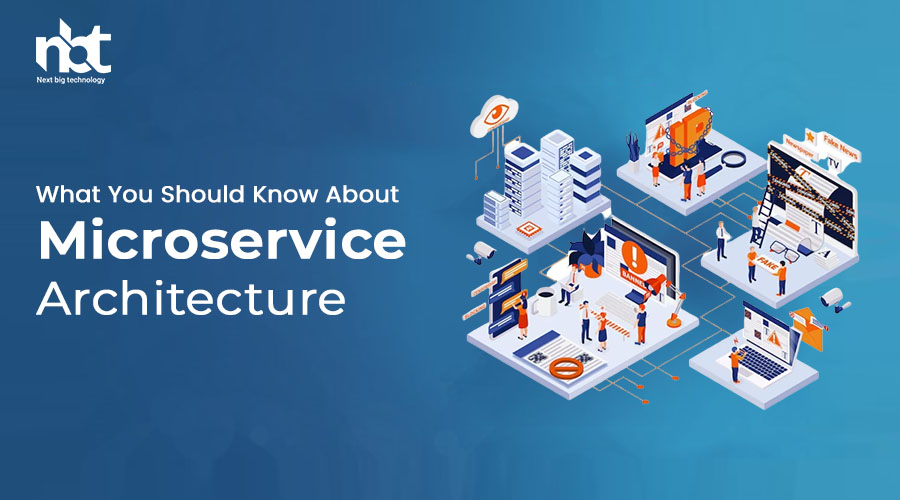Introduction: In today’s fast-paced and ever-evolving technological landscape, software development approaches that enable agility, scalability, and maintainability are highly sought after. Microservice architecture has emerged as a popular architectural style that addresses these needs. In this blog, we will explore what you should know about microservice architecture, its key concepts, benefits, challenges, and considerations for implementation.
- Understanding Microservice Architecture: Microservice architecture is an architectural style that structures an application as a collection of small, loosely coupled services that work together to fulfill specific business functionalities. Unlike monolithic architectures, where the entire application is tightly integrated, microservices are independent and can be developed, deployed, and scaled individually.
- Key Concepts of Microservice Architecture: a. Service Decentralization: Each microservice represents a specific business capability or function, such as user management, payment processing, or inventory management. b. Service Independence: Microservices are autonomous and can be developed, deployed, and managed independently of each other. c. Communication: Microservices communicate with each other through well-defined APIs, typically using lightweight protocols such as REST or message queues. d. Data Management: Each microservice has its own database or data store, optimized for its specific requirements. e. Scalability: Microservices enable horizontal scalability, allowing individual services to scale independently based on demand. f. Resilience: The failure of one microservice should not impact the overall system, as other services can continue to operate independently. g. Continuous Deployment: Microservices facilitate continuous integration and deployment, enabling rapid and frequent updates.
- Benefits of Microservice Architecture: a. Scalability: Microservices enable individual components to scale independently, ensuring efficient resource utilization and better performance. b. Agility: Developers can work on and deploy individual microservices without affecting the entire application, allowing for faster development cycles and shorter time-to-market. c. Modularity and Maintainability: Microservices promote modular development, making it easier to understand, modify, and maintain specific services. d. Fault Isolation: Isolating services helps prevent cascading failures and allows for easier identification and resolution of issues. e. Technology Diversity: Each microservice can be developed using different technologies, allowing teams to choose the most suitable tools and frameworks for each service. f. Team Autonomy: Microservices enable teams to work independently on specific services, empowering them to make technology and architectural decisions.
- Challenges of Microservice Architecture: a. Distributed System Complexity: Managing multiple services across different platforms requires additional effort in terms of monitoring, deployment, and coordination. b. Service Coordination: Effective communication and synchronization between services become crucial for maintaining data consistency and overall system behavior. c. Operational Overhead: Managing a larger number of services may increase operational complexity, including monitoring, logging, and infrastructure management. d. Data Consistency: Ensuring data consistency across multiple services can be challenging, as each service may have its own data store and different consistency requirements. e. Testing Complexity: Testing microservices requires a comprehensive strategy that includes integration testing, contract testing, and end-to-end testing.
- Considerations for Implementing Microservice Architecture: a. Domain-Driven Design: Identify and define clear boundaries for each microservice based on business domains to ensure proper encapsulation and separation of concerns. b. Communication Protocols: Choose appropriate communication protocols and patterns, such as REST, message queues, or event-driven architecture, based on the specific requirements of each microservice. c. Data Management: Select the appropriate data storage technologies for each microservice, considering factors like data volume, complexity, and performance requirements. d. Infrastructure and Deployment: Utilize containerization technologies like Docker or container orchestration platforms like Kubernetes to manage and deploy microservices effectively. e. Monitoring and Observability: Implement robust monitoring and observability practices to gain insights into the performance, availability, and health of individual microservices. f. Team Collaboration: Promote cross-functional collaboration and effective communication between development, operations, and testing teams to ensure successful implementation and ongoing maintenance.
Conclusion: Microservice architecture offers significant advantages for building scalable, maintainable, and agile software systems. By breaking down monolithic applications into smaller, independent services, organizations can leverage the benefits of scalability, fault isolation, modularity, and rapid deployment. However, implementing microservice architecture comes with its challenges, including distributed system complexity and ensuring data consistency. By understanding the key concepts, benefits, challenges, and implementation considerations of microservice architecture, organizations can make informed decisions and effectively leverage this architectural style to build robust and scalable software systems that meet the evolving needs of modern businesses.










